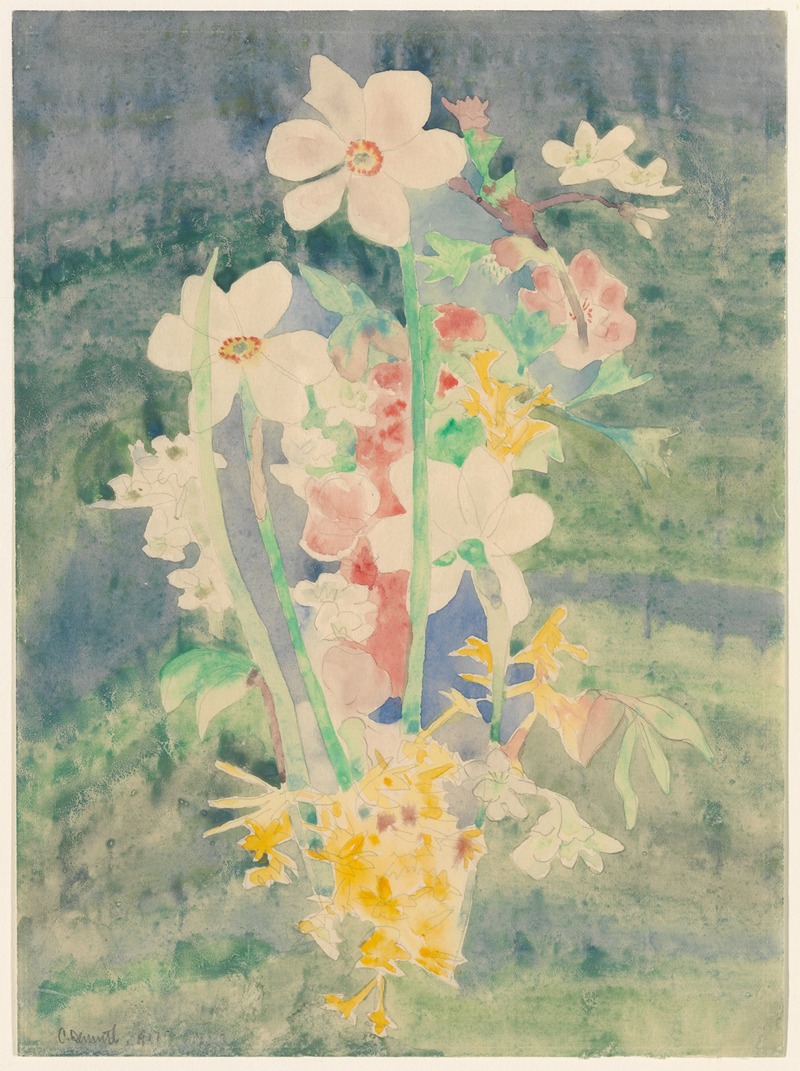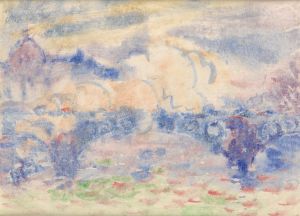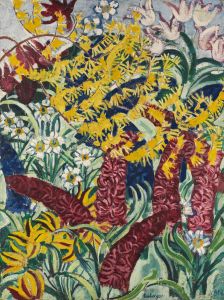
Narcissi
A hand-painted replica of Charles Demuth’s masterpiece Narcissi, meticulously crafted by professional artists to capture the true essence of the original. Each piece is created with museum-quality canvas and rare mineral pigments, carefully painted by experienced artists with delicate brushstrokes and rich, layered colors to perfectly recreate the texture of the original artwork. Unlike machine-printed reproductions, this hand-painted version brings the painting to life, infused with the artist’s emotions and skill in every stroke. Whether for personal collection or home decoration, it instantly elevates the artistic atmosphere of any space.
Charles Demuth's "Narcissi" is a notable work within the oeuvre of the American artist, who is best known for his contributions to the Precisionist movement. Demuth, born in 1883 in Lancaster, Pennsylvania, was a pivotal figure in early 20th-century American art, and his works often reflect a blend of modernist and realist influences.
"Narcissi" is an exemplary piece that showcases Demuth's skill in watercolor, a medium in which he excelled. While specific details about the creation date of "Narcissi" are not widely documented, it is known that Demuth frequently painted floral subjects throughout his career. His floral watercolors are celebrated for their delicate yet precise execution, capturing the intricate beauty of flowers with a modernist sensibility.
Demuth's approach to painting flowers, including those in "Narcissi," often involved a close-up perspective that emphasized the form and structure of the plants. This technique aligns with the Precisionist style, which is characterized by clean lines, geometric forms, and a focus on the clarity of composition. Although Precisionism is more commonly associated with industrial and architectural subjects, Demuth's application of its principles to natural forms demonstrates his innovative approach to art.
The choice of narcissi as a subject may reflect Demuth's interest in the symbolic and aesthetic qualities of flowers. Narcissi, commonly known as daffodils, are often associated with themes of renewal and rebirth, which could have held personal significance for the artist. However, without specific documentation, any interpretation of the symbolic meaning in "Narcissi" remains speculative.
Demuth's floral works, including "Narcissi," are also notable for their exploration of color and light. His use of watercolor allowed for a luminous quality, with transparent layers that convey the delicate textures of petals and leaves. This mastery of watercolor technique contributes to the enduring appeal of his floral paintings.
Throughout his career, Demuth maintained a close connection to the artistic community in the United States, particularly through his association with Alfred Stieglitz and the artists of the Stieglitz Circle. This group was instrumental in promoting modern art in America, and Demuth's work was frequently exhibited in Stieglitz's galleries.
"Narcissi" and other floral works by Demuth continue to be appreciated for their aesthetic beauty and technical skill. They offer insight into the artist's ability to blend modernist principles with traditional subjects, creating a unique body of work that remains influential in the study of American art.
In summary, while specific details about "Narcissi" are limited, the painting exemplifies Charles Demuth's mastery of watercolor and his innovative approach to the Precisionist style. His floral works, characterized by their clarity, precision, and beauty, continue to be celebrated as significant contributions to American modernism.


















